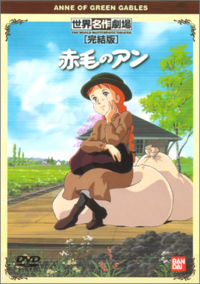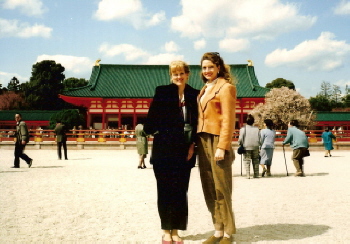The old idea was that you have to live an exciting life to write good books. I believe that you have to have a rich imaginative life. You don’t have to fight dragons to write books. You just have to live deeply the life you’ve been given.
Katherine Paterson, children’s author

If you’re participating in National Novel Writing Month, how’s it coming? I’ve read on a few people’s blogs the up-and-down woes of pounding the keys day after day, trying to reach that magical 50k mark at the end of the month. I’m simply amazed at people who can write, then blog about what they’re writing and get feedback from readers. I can’t do that!
In fact, I was feeling guilty a couple of weeks ago that I’m not telling anyone what I’m working on. Why do I feel this need to keep it all a secret? There’s nothing new under the sun, of course. My story is simply a recycled theme, coupled with my own life experiences and imagination.
Then I started doing some research on children’s author, Katherine Paterson, and I came across her acceptance speech for the Scott O’Dell Award. She started her speech by saying, “As many of you may know, I do not talk about a book while I am working on it. Even my husband is left in the dark until I present him with the messy first draft.”
Ah, relief! It’s OK not to talk about a work in process. It gives me freedom to create while my piece is still in the quiet darkness of my mind and heart. I’ve already changed some character’s names — and I’m sadly thinking about letting one of my characters go. It’s painful, but I think he might be better off in another story.
The more I’ve gotten into writing, the more I’ve realized my need to study how the masters do it. I thought it would come naturally from all the reading I’ve done, but there’s a craft to novel writing — and I don’t have it yet!
I read through Randy Ingermanson’s Snowflake Method, and I’ve worked on several of his steps with my plot and characters. He forced me to think about the design of my whole story, instead of letting my characters plod along and do as they pleased. And I’ve come to a horrible realization about my main character.
She’s too nice.
At least she’s too nice in the beginning. In fact, as I’ve plotted my book’s design using the Snowflake Method, I’m realizing that the problem with my book right now is that there’s not a major problem at all. I’ve just got some nice characters meeting each other, getting involved in a few humorous situations, helping each other, and then we tie things up nicely.
Nice does not a novel make.
I realize now I’ve got to go back and rewrite my first chapter and make my character not so nice. She’s got to have some flaws, some areas for growth — so that by the end of the novel, she’s changed a bit. And I’ve got to include more danger, more action, more antagonists. If everything is so nice and spiffy, then what will readers gain from reading the book? My readers don’t lead perfect, shiny lives — so they’re not going to care about characters who are polished up in the beginning.
It’s going to be hard. Since I’m the one writing the story, and I know how it’s going to end up, I don’t want to change the beginning and poke all these holes in my character. I love her, and I want readers to love her right away too. But she’s got to come to a “shocking realization” about herself (which appears in my one-sentence summary of the book).
So now I see how I must try to rewrite that opening chapter — actually much of the book will need to be rewritten. You see, my readers will be kids, and kids are smart. Especially kids who’d rather be reading a book than watching TV or playing boring video games.
As for my NaNoWriMo progress, I’ve decided to rename my file “The Process of Writing (Novel Title).” In this file, I’m tossing in everything I’ve worked on this month. My daily journal entries that go along with writing out scenes, my character’s autobiographies, my prayers (Lord, please help me write what you want me to write), a few emails from encouraging writerly friends, and bits of dialogue my own children say.
With all this, I’m up to 37,000 words. So I will hopefully keep going a few more days and reach the finish mark. But I’ll have to write by long-hand when we’re traveling to visit family this week because I don’t have a laptop. (sigh.)
Yet Robin Lee Hatcher says she writes her character autobiographies by long-hand, so maybe this will be good for me after all. I think you use a different part of your brain to write by hand as compared to typing.
Many times during this busy month of writing, I’ve felt God speak to me. I know it was Him because the experiences are so powerful, I’ve been overwhelmed to tears. For example, part of my story takes place in the 40s, and one day I was feeling frustrated that I needed so much more time to research.
Then I went to a meeting, and we had a guest speaker, a well-known writer in my hometown who writes a weekly newspaper column. (I’d met her once, when I bought a book she edited.) When she stood up to give her speech, she showed us all some newspapers from the 40s, with headlines screaming about important events that appear in my novel. She talked about what it was like for her. I hope no one in the meeting saw me scrunch down in my seat and wipe away tears.
Another time, I was thinking, This whole writing thing is such a waste of my time. I’m no good. I can’t possibly write a novel. There are several Japanese elements in my story, and I was thinking that there are tons of people who could write about this better than me. I was pushing my cart through Wal-Mart, blessedly alone, while I thought these things. Then I looked up, and I was standing in the Asian section of the store.
There were boxes, packages, and cans of my favorite foods that I remember eating in Japan! The Japanese words jumped out at me, and I could still read them. For example, Wal-Mart carries the “Sapporo Ichiban” brand of Ramen. I could hear the commercial in my head that I watched on TV hundreds of times when I lived there. Again, I was moved to tears, and even though the store was packed, there was no one but me on this aisle, so nobody saw me. Write, my child. Write what’s on your heart.
One day, I got an email from my husband, asking if I’d be interested in going to a particular writing conference next year. This was all his idea. We talked about it, and I decided to get up in the morning and use my NaNoWriMo word count goal to register for the conference. I also signed up for a one-day intensive writing workshop, where you read a part of your work out loud to an editor or agent.
A few days later, I got a package in the mail, confirming my registration. When I went back to the site to check something online, two words jumped out at me: SOLD OUT. The workshop I’m signed up for is now sold out. I couldn’t believe it. If it weren’t for my husband’s prodding, I wouldn’t have a spot. Again, I was overcome with tears!
So, as you see, I’ve become quite an emotional basket case this month! I have so little time to write, only in the wee morning hours, but as I go along my days, I’m listening to my children more closely than ever, jotting down their exact words on sticky notes, studying their actions … and moving … slowly … along … in my dream of writing a children’s novel.
In living this way, I’ve never felt such JOY of being a mom! It’s like my characters are alive in my own home!
And you? What are you dreaming about this week?
I wish you all a Happy Thanksgiving. May God bless you with a wonderful celebration of His love!














